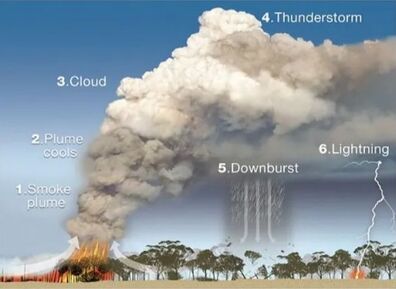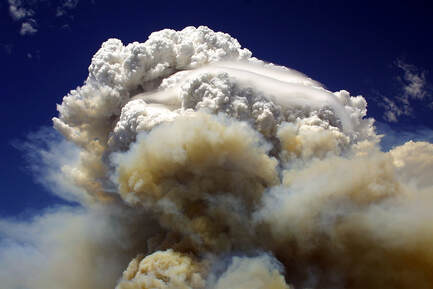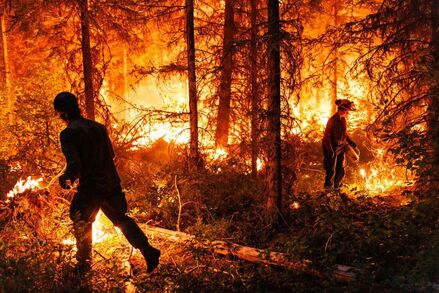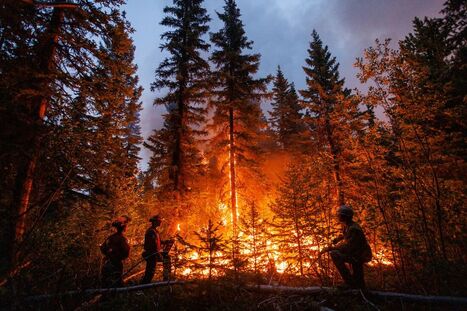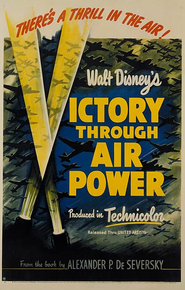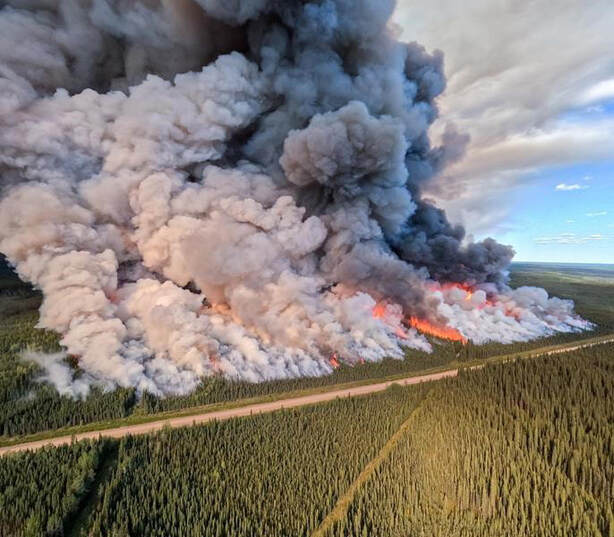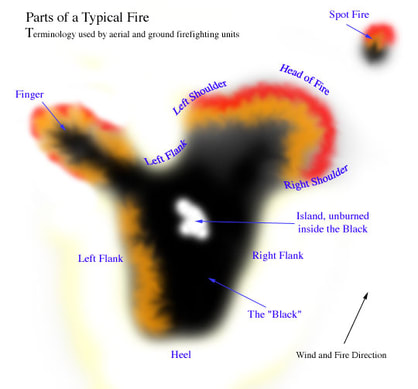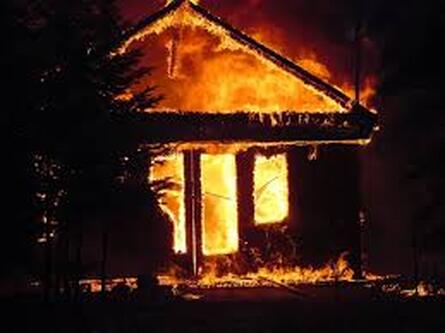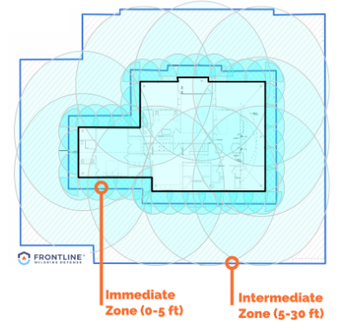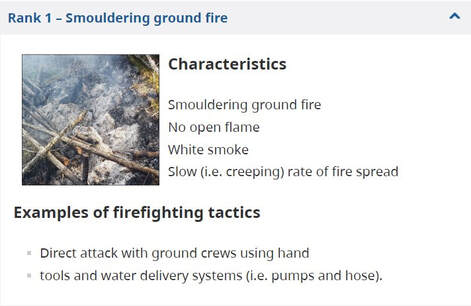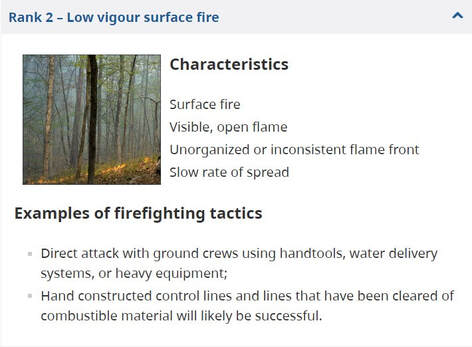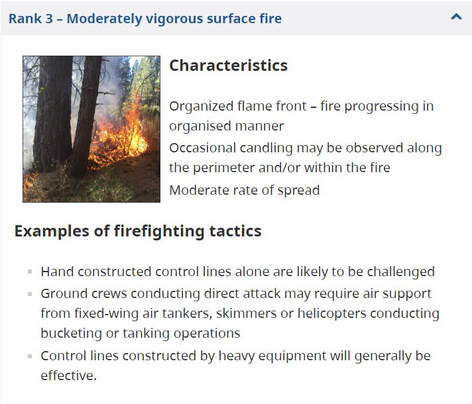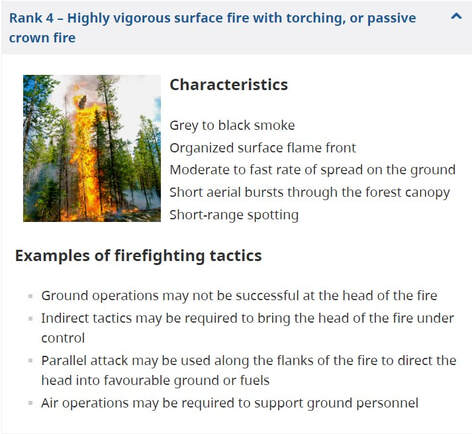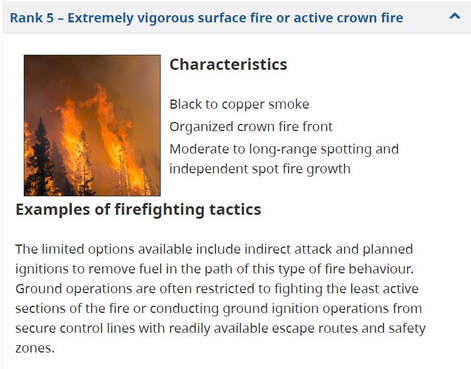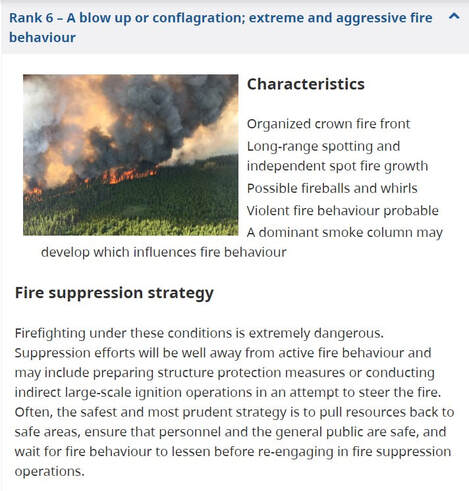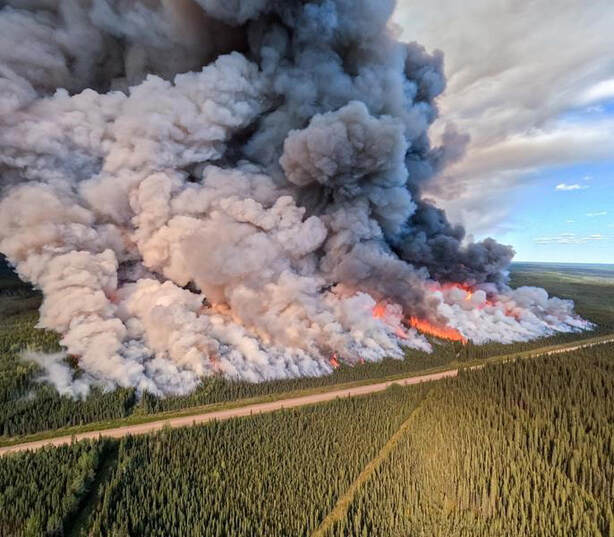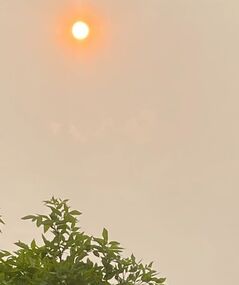www.theoxfordscientist.com
- First Duty
- ... the dry cough, a lethal hate crime
- ... open letter to Premier Danielle Smith
- Trump Guilty on all 34 Felony Counts
- shooting of PM of Slovakia
- YouTube channel, launch
- Carlson, tuckered out
- ... Chinese New Year - 2024
- ... orange jesus sprouts sixth finger
- ... Wagner Group in Africa
- ... conduct unbecoming an MP
- Alberta, burning
- ... the Trump legacy
- Eric LaMont Gregory
- Wacko in Waco
- Pence, Christian last
- ... Putin indicted
- The Egyptian Secret
- Fox fiction
- The Open Skies Treaty
- derailed in Ohio
- close your Twitter account
- ... espionage-a-lago
- Highland Park
- Canada bans handguns and assault rifles
- ... apology, only a first step
- ... world wide auto surf
- Conklin to Buffalo
- Danielle Smith and Liz Truss
- An End to War
- Globe & Mail, blatant sophistry
- conservative press, a fitting epitaph
- Uvalde, explanation time
- ... Ukraine, a crime against humanity
- Open Letter to Justin Trudeau
- Queen Elizabeth II
- Moscow Mitch
- ... illiberal roadshow descends on Edmonton
- ... don't cry for Kenney, Alberta
- ... Edmonton, on the world stage
- ... advertise in Chinese & English
- ... missing in Edmonton
- Human Rights
- Facebook, bankrupt ethically & financially
- Pelosi rejects Jordan
- ... vaccine roulette
- ... a mask in time saves nine
- 9/11 + 17
- the Gregory military doctrine
- lying Rodgers, unsportsmanlike Brady, falter
- ... best free traffic list 2021
- 34% of Covid survivors - will not fully recover -
- Trump ... doing Putin's bidding
- Coronavirus, a perfect storm
- Biden/Harris, ... America, can breathe, again
- ... in the heat of the day
- 11 September 2021
- Donald J Trump - like father, like son
- Jim Jordan will resign, inevitably
- ... raise money for your group
- Paris - Sanguinary excess, again
- Mitch McConnell is no Alexander Hamilton
- What Trump knew 28 January 2020
- None Dare Call It Murder
- use of force, part 2
- Coronavirus, the second wave
- Click & Join 2021
- Coronavirus Pandemic, Part 2
- Coronavirus Pandemic
- Terror Returns to London Bridge
- use of force, part 1
- Ohio's trio of shame
- ... how to earn Bitcoin
- Kenney: Scheer nonsense, part 2
- the dark charisma of Donald Trump
- the three stooges
- Trump's base, 24% and dwindling
- Scheer Nonsense
- getting away with murder
- World Wide Auto Surf
- Beyond a reasonable doubt
- Mueller, Redactions & Twitter
- An All Alberta Solution
- Obama Attends Raptors Game
- Call for action on cannabis convictions
- John Bolton: beware the Trojan horse
- Mandel Clarifies MMR Stance
- People First - Dai for Whitemud mp4
- Notley, Mandel or Kenney
- Dai for Whitemud. Dai for Alberta
- To refine or not to refine
- Trump under subpoena
- Mandel vs Elections Alberta
- Individual 1 - Donald J Trump
- Is Mississippi Learning?
- Stand Back & Stand By
- Flynn Seeks Delay in Sentencing
- Roadmap to Trump's Impeachment
- Michael Cohen sentenced
- Trump Obstructing Justice
- Defense Secretary Resigns
- The Ultimate Vanishing Act
- Hate Crimes are Increasing
- Trump announces Military Doctrine
- The Meeting, Trump Tower, June 9 2016
- 13 Angry White Male Senators
- Mean SOBs, Ryan & Jordan
- Trumpgate, a review of the facts
- Treason by the Dozens
- Terror on London Bridge
- Anti-Trump Ryan as Speaker, doubtful
- Haiti - shameful Red Cross 40% admin costs
- Deadly Bastille Day in Nice
- Special Powers
- Brussels - revenge attack
- Gregory's forte
- America First
- Brexit triumphs in UK referendum
- Ali
- Guns, Obama, the NRA & the Cleric
- Gorsuch & Brown v Board of Education
- The Generosity of America
- To Protect and To Serve
- Where is Alma Del Real?
- The Islamic World - a primer for policy makers
- The Lists - The Missing and Unsolved Homicides
- Michiana Murders
- Clinton
- Kings, Emperors & John Boehner
- Donnelly - the constant campaigner
- Kevin McCarthy
- Alberta Party
- Selections from The Ultimate Vanishing Act
- Malaysian Airlines Flight 370
- Ukraine - the Putin Doctrine
- Twilight
- Principles
- Bridge-gate: a closer look at Christie's staff
- Mandela
- Liangjun Wang
- Rethinking Syria
- about Chechnya
- Rethinking the War on Terror
- Tepid waters
- Linkage Blindness
- None Dare Call it Treason
- Emancipation
- Power
- Newtown - a cry for help
- Quarantine
- 11 September
- Hidden Crimes, Hidden Victims
- Cry, My Beloved Country
- Cruel Winds of October
- Doctrine
- Fed Video
- Under Seige
- Labor Day
- Destiny of America
- McEwen
- Rampage
- Threats
- GSK
- McEwen
- Condoleezza's watch
- Danger
- B R I C S
- Israel
- Huckabee
- Evidence
- Ties that Bind
- Sarajevo / Rwanda
- Violence
- Baby Safety
- MLK
- Libya
- Franklin
- Principles
- Fox 45
- America Wins Nobel Peace Prize
- Celina
- Middletown
- Arms Race
- Egypt
- Dollar
- 3 July
- $6 Trillion
- Jefferson and Adams
- 4th
- Libya
- Fening
- Abe
- Housing for Haiti
- Palin on Haiti
- ' ... an innocent man'
- Oil in the Gulf
- ... a wider regional conflict
- the demise of General McChrystal
- ... and to the republic
- BP and the Precautionary Principle
- Making Sense of Fort Hood
- Air Quality
- Un largo crepúsculo Lucha
- Israel
- Policy
- Home
- Casa
- un tambor diferente
- The Oxford Years
- Defense
- The Secret Hold
- INS will cease to exist
- ABC Toledo
- the grapes of wrath
- H1N1 Fluenza
- Tantamount to Treason
- MKL 4th speech
- Trans Dip
- Trump Rescinds DACA
- Rethinkin Syria
- Oxfam, IRC and other NPR Darlings
- Top Nine Articles for March 2015
- The Ultimate Vanishing Act
- Where is Alma Del Real?
- Alma Del Real
- 11 September
- A Measure of Philanthropic Success
- Tantamount to Treason
- South Carolina
- Double Crossed by Double Standards
- Call for photo radar cash grab inquiry
- Remembrance Day 2015
- Trudeau victory portends
- Blair Speech to Congress 2003
- Justin Trudeau, Tony Blair & Marijuana
- Trump, Harper, Ambrose & Ryan
- Saudi Arabia vs Iran
- The Islamic World ... the basics
- 2020 Presidential Candidate Releases Book
- Mississauga house explosion
- Reset: Driving Black in America
- Giuliani, shut up, stop name calling & prepare to govern
- Stop the Madness in Aleppo & Mosul
- Drain The Swamp
- Unpresidented
- Trump & the CIA, the high priest of false security
- The Hour of Maximum Danger
- Quebec, Queens U, Charleston & Trump
- Paul Ryan, Steve King, Trumpcare & Babies
- Harvey wreaks havoc
- VPN, don't surf without it
- Anju Sharma, the right choice for Edmonton-Mill Woods
- Adlandpro
- Trump's Iranian ties
- Brianna Keilar CNN - the big lie
- ... best free manual surf list 2021
- the Gregory military doctrine
- theOxfordscientist.com now on Tik Tok
- Chopin
- in the Course of human events
- 37 countries ban felon Trump
- un Plat qui se Mange Froid
- Trump shot at rally by 20-year-old
Canada, Greece & Maui; burning, needlessly,
Yellowknife can still be saved, as of 16 August 2023
_ _ _
... revolutionary firefighting technique,
to debut in Disney-like 'Victory through Air Power' animated film -
E LaMont Gregory MSc Oxon
Yellowknife can still be saved, as of 16 August 2023
_ _ _
... revolutionary firefighting technique,
to debut in Disney-like 'Victory through Air Power' animated film -
E LaMont Gregory MSc Oxon
Cumulus Flammagenitus, pyrocumulus, clouds formed by convection caused by a heat source & moisture
Four firefighters have lost their lives, so far, in the wildfires of 2023 in western Canada,
while the number of those injured soars.
Four firefighters have lost their lives, so far, in the wildfires of 2023 in western Canada,
while the number of those injured soars.
... lightning-caused wildfires, caused by wildfire induced lightning
The practical significance of the illustration on the left above, is dramatically brought to light in a recent statement by the BC Wildfire Service, which reports that the agency is braced for another volatile weekend after 51,000 lightning strikes and 399 wildfires started over the past week in the province. It is a vicious cycle.
And consider the implications of the oft heard statement by firefighting officials that they have no choice but to let a particular fire or set of fires continue to burn unchecked. Such decisions guarantee that the scenario depicted in the illustration on the left above will continue and more wildfires will be triggered.
If you want to go the the moon, and all you have is a bicycle; you are not going to the moon.
THE GLOBE AND MAIL JESSE WINTER/THE GLOBE AND MAIL
No commander, would allow their troops to come into close proximity to an opposing force, without the means to repel that force.
We are sending our troops to battle wildfires, without the means to actually fight or to control the fires.
The first priority must be the preservation of life, property, and infrastructure, and in that order. Merely increasing the numbers of troops brought into the battle, is not, in and of itself, a solution.
The solution lies in arming our troops with the tools to achieve the objective.
Command takes the agreed policy, and gathers all the necessary information and the personnel and material resources that is required to meet the objectives demanded by the policy decisions.
What are the policy objectives, and who are the commanders that are driving the very limited resources that are being brought to bear to oppose the wildfires?
No commander, would allow their troops to come into close proximity to an opposing force, without the means to repel that force.
We are sending our troops to battle wildfires, without the means to actually fight or to control the fires.
The first priority must be the preservation of life, property, and infrastructure, and in that order. Merely increasing the numbers of troops brought into the battle, is not, in and of itself, a solution.
The solution lies in arming our troops with the tools to achieve the objective.
Command takes the agreed policy, and gathers all the necessary information and the personnel and material resources that is required to meet the objectives demanded by the policy decisions.
What are the policy objectives, and who are the commanders that are driving the very limited resources that are being brought to bear to oppose the wildfires?
... it is not climate change that is the reason we are breathing
the most polluted air on planet earth, it is a failure of leadership
_ _ _
Alberta, wildfires
Rachel Notley was Premier of Alberta in the 2016 wildfire season
The wildfire in Northern Alberta that became the worst natural disaster in Canadian history, started as a relatively containable wildfire, and little attention was paid to it over the first 10 days to two weeks.
The wildfire swept through nearly 6,000 square kilometers of boreal forest in northern Alberta, in May 2016. Subsequently, Fort McMurray lost 2,579+ residential and commercial buildings, and 90,000 people were forced out of their homes and businesses.
The resultant damage to property alone was calculated to be in excess of $10 billion dollars, making the Fort McMurray region wildfires the most costly natural disaster in Canadian history.
Although reliable estimates as to the costs of the 2016 wildfires in other socioeconomic terms, such as health indicators, are still forthcoming, it is known that in general, the type of air pollution emitted by wildfires contributes to some 20 per cent of all cardiovascular illnesses and deaths, that is, morbidity and mortality.
It will be important for the discussion later in this article, but it should also be noted that the 2016 wildfires in the extensive Athabasca river basin and wetlands system, can still be measured, both in terms of its environmental impact and the continued real costs to the Fort McMurray community, today.
Nearly seven years after the event, among its lasting impacts is the threat the wildfires continue to exert on Fort McMurray’s reservoir and drinking water supply.
In fact, it is known that after it rains, since the massive wildfires of 2016, there are significant increases in ash, potassium, nitrogen, calcium and heavy metals, such as lead, even within the river’s normal load, and the reservoir that is the catchment for Fort McMurray's potable water supply.
The water can still be treated and made safe for public consumption, but at a cost. The fire residue that washes into the reservoir also makes it harder to manage bacteria in the city’s water treatment plant.
In essence, whereas the city’s water is safe within existing standards, nonetheless, it is more difficult and increasingly more expensive to keep it safe. Fort McMurray officials have determined, they are paying a continued cost because of the fire.
Treatment costs, have increased 50 per cent, since the wildfires of 2016, seven years ago.
During the first few days of the developing 2016 wildfire in the boreal forest and Athabasca river basin in northern Alberta, this author made contact with the office of premier Notley and the individual identified as head of the firefighting effort in the region of Fort McMurray.
Given the emergency nature of the developing crisis, this author requested no more than 10 minutes of the premier's time.
To categorize the response from Notley's office as anything other than negative, would be generous.
The wildfire swept through nearly 6,000 square kilometers of boreal forest in northern Alberta, in May 2016. Subsequently, Fort McMurray lost 2,579+ residential and commercial buildings, and 90,000 people were forced out of their homes and businesses.
The resultant damage to property alone was calculated to be in excess of $10 billion dollars, making the Fort McMurray region wildfires the most costly natural disaster in Canadian history.
Although reliable estimates as to the costs of the 2016 wildfires in other socioeconomic terms, such as health indicators, are still forthcoming, it is known that in general, the type of air pollution emitted by wildfires contributes to some 20 per cent of all cardiovascular illnesses and deaths, that is, morbidity and mortality.
It will be important for the discussion later in this article, but it should also be noted that the 2016 wildfires in the extensive Athabasca river basin and wetlands system, can still be measured, both in terms of its environmental impact and the continued real costs to the Fort McMurray community, today.
Nearly seven years after the event, among its lasting impacts is the threat the wildfires continue to exert on Fort McMurray’s reservoir and drinking water supply.
In fact, it is known that after it rains, since the massive wildfires of 2016, there are significant increases in ash, potassium, nitrogen, calcium and heavy metals, such as lead, even within the river’s normal load, and the reservoir that is the catchment for Fort McMurray's potable water supply.
The water can still be treated and made safe for public consumption, but at a cost. The fire residue that washes into the reservoir also makes it harder to manage bacteria in the city’s water treatment plant.
In essence, whereas the city’s water is safe within existing standards, nonetheless, it is more difficult and increasingly more expensive to keep it safe. Fort McMurray officials have determined, they are paying a continued cost because of the fire.
Treatment costs, have increased 50 per cent, since the wildfires of 2016, seven years ago.
During the first few days of the developing 2016 wildfire in the boreal forest and Athabasca river basin in northern Alberta, this author made contact with the office of premier Notley and the individual identified as head of the firefighting effort in the region of Fort McMurray.
Given the emergency nature of the developing crisis, this author requested no more than 10 minutes of the premier's time.
To categorize the response from Notley's office as anything other than negative, would be generous.
Notley out, Kenney in
... out of the pan, into the fire
... out of the pan, into the fire
Naturally, the annual wildfire season continued into the Kenney administration.
Through political contacts, this author met with several ministers and former ministers to try and arrange a meeting with Premier Jason Kenney to discuss the advent of a new, highly promising, firefighting technique and technology.
In the interim, on the suggestion of members from various agencies which make up the national training, research and firefighting management bureaucracy, this author developed a discussion paper to share with local fire services, and municipal and provincial officials.
The discussion paper served two main functions, both of which are important in the introductory phase of any new or innovative technique or technology, i.e., it allows one to discuss the broad implications of the technique, and it establishes what everyone contacted knew at the time they first encountered the information in the discussion paper.
When one considers that the budget for protective services, police and fire, represents an ever-increasing share of the municipal budget, the introduction of any new way of doing anything in protective services will have short, medium and long term implications, not only in terms of costs, but the deployment of both human and material resources. This is one reason why cost-benefit analysis studies are so important.
The discussion paper was delivered to the Giroux Road fire station in St Albert. A hose and ladder training session by that fire station is displayed on the cover of the discussion paper. In addition, this author sought a meeting with the then, and current mayor of St Albert, to no avail.
This author visited a fire station in the Riverbend area of Edmonton, as well as, the fire service training and demonstration center, at which time, and from which location, a copy of the discussion paper was faxed to the chief of the Edmonton Fire Service.
While being utterly dismissive and rather condescending, at the Riverbend area fire station, they mentioned that they were already working on an alternative firefighting technology, as if it was a secret.
The 'new' technology he was speaking around is, of course, various firefighting aqueous film forming foam (AFFF) solutions and flame retardants. AFFF foams are now the subject of billions in civil lawsuits, due to the known health implications for those exposed to them.
Foams and retardants, which since the pioneering work by medical researchers in 2004, identified increased risks of prostate cancer, Hodgkin's lymphoma, leukemia, as well as, a host of myelomas, few firefighting foams or retardants, including Class B F3s, have been approved for use by any national agency responsible for protecting public health by ensuring the safety, efficacy, and security of products, to which any member of the public may be exposed.
The meetings with the current and past ministers of various levels, did not result in a meeting with Premier Kenney, but this author did receive a telephone call from the junior minister in charge of wildfires in the Kenney administration.
The junior minister seemed agitated, and let me know, in no uncertain terms, that he felt that he had been pressured to extend to me the courtesy of a telephone call. He asked a few questions, to which he was not interested in the answers, and the call ended abruptly.
What is important, is that he never asked about the delivery system that makes the novel firefighting technology work.
There are two plausible explanations for the junior minister's less than professional demeanor, one is that he did not like the fact that a great deal of pressure had been put upon him to make that call, and the second concerns the highly touted request for assistance from Alberta by the government of Australia to help with their massive wildfires.
That assistance ended in the demise of several firefighters, associated with the aerial suppression efforts, in which Alberta wildfire service personnel were involved.
The transcript of that call will be discussed later in this article.
Through political contacts, this author met with several ministers and former ministers to try and arrange a meeting with Premier Jason Kenney to discuss the advent of a new, highly promising, firefighting technique and technology.
In the interim, on the suggestion of members from various agencies which make up the national training, research and firefighting management bureaucracy, this author developed a discussion paper to share with local fire services, and municipal and provincial officials.
The discussion paper served two main functions, both of which are important in the introductory phase of any new or innovative technique or technology, i.e., it allows one to discuss the broad implications of the technique, and it establishes what everyone contacted knew at the time they first encountered the information in the discussion paper.
When one considers that the budget for protective services, police and fire, represents an ever-increasing share of the municipal budget, the introduction of any new way of doing anything in protective services will have short, medium and long term implications, not only in terms of costs, but the deployment of both human and material resources. This is one reason why cost-benefit analysis studies are so important.
The discussion paper was delivered to the Giroux Road fire station in St Albert. A hose and ladder training session by that fire station is displayed on the cover of the discussion paper. In addition, this author sought a meeting with the then, and current mayor of St Albert, to no avail.
This author visited a fire station in the Riverbend area of Edmonton, as well as, the fire service training and demonstration center, at which time, and from which location, a copy of the discussion paper was faxed to the chief of the Edmonton Fire Service.
While being utterly dismissive and rather condescending, at the Riverbend area fire station, they mentioned that they were already working on an alternative firefighting technology, as if it was a secret.
The 'new' technology he was speaking around is, of course, various firefighting aqueous film forming foam (AFFF) solutions and flame retardants. AFFF foams are now the subject of billions in civil lawsuits, due to the known health implications for those exposed to them.
Foams and retardants, which since the pioneering work by medical researchers in 2004, identified increased risks of prostate cancer, Hodgkin's lymphoma, leukemia, as well as, a host of myelomas, few firefighting foams or retardants, including Class B F3s, have been approved for use by any national agency responsible for protecting public health by ensuring the safety, efficacy, and security of products, to which any member of the public may be exposed.
The meetings with the current and past ministers of various levels, did not result in a meeting with Premier Kenney, but this author did receive a telephone call from the junior minister in charge of wildfires in the Kenney administration.
The junior minister seemed agitated, and let me know, in no uncertain terms, that he felt that he had been pressured to extend to me the courtesy of a telephone call. He asked a few questions, to which he was not interested in the answers, and the call ended abruptly.
What is important, is that he never asked about the delivery system that makes the novel firefighting technology work.
There are two plausible explanations for the junior minister's less than professional demeanor, one is that he did not like the fact that a great deal of pressure had been put upon him to make that call, and the second concerns the highly touted request for assistance from Alberta by the government of Australia to help with their massive wildfires.
That assistance ended in the demise of several firefighters, associated with the aerial suppression efforts, in which Alberta wildfire service personnel were involved.
The transcript of that call will be discussed later in this article.
... interesting and potentially revolutionary idea
Engineering & Capability Demonstration Directorate
Engineering & Capability Demonstration Directorate
Canada maintains a specialized group of scientists and engineers, within the Canadian Space Agency (CSA), the Engineering & Capability Demonstration Directorate, whose mandate is to assess emerging technologies and provide scientific, engineering and technological expertise, both within and outside the CSA.
The Canadian Space Agency houses the very best scientists and engineers in Canada.
What is most interesting is that from the list of those with whom the discussion paper was shared, within and outside the firefighting services, not one of them, with the notable exception of the CSA directorate, asked a single question about the delivery mechanism.
And it is the delivery mechanism that is the core essential element of what the CSA directorate referred to as an '... interesting and potentially revolutionary idea', in firefighting.
There are several paths the revolutionary firefighting technology might take, as its development and inevitable adoption move forward.
Given our current circumstances, and reasonable forecasts that anticipate the need to fight an increasing frequency and ever larger wildfires for the foreseeable future, the advance of this technology should be deemed a matter of urgent national security, which it clearly is, and prompt an initiative on the order and scale of the Manhattan Project, the research and development undertaking during World War II, from 1942 to 1946, led by the United States with the support of Canada and the United Kingdom.
The purpose of organized professional firefighting is to preserve life, property, infrastructure and our natural habitat, the space within which life and property exist.
In recent events, a chemical transport train derailed and caught fire in northern Ohio, and a plastic recycling plant went up in flames in Indiana, both fires burned for days, spewing large amounts of toxic chemicals and particulate-laden smoke into the air.
Deploying the new firefighting method, both of these fires could have been suppressed and completely extinguished within one day.
That single day includes the time necessary to bring the firefighting medium to the fire site, which speaks to its abundant and ready availability.
There is no fundamental change in using the standard fire engine pumping apparatus, although there are alterations to existing nozzles, which could expand its use.
A structural fire in Edmonton, in winter, resulted in an estimated $100,000 dollars in fire damage, and $700,000 in water damage.
It is an torturous saga, but at its core, the explanation as to, how can this continue to happen, in part, helps explain the glacially slow adoption of new firefighting methods, and techniques.
And speaking of glacially slow, among the various pathways that the new firefighting technology might take on its road to adoption and eventual deployment is the IPO route, about which no more will be stated here.
The Canadian Space Agency houses the very best scientists and engineers in Canada.
What is most interesting is that from the list of those with whom the discussion paper was shared, within and outside the firefighting services, not one of them, with the notable exception of the CSA directorate, asked a single question about the delivery mechanism.
And it is the delivery mechanism that is the core essential element of what the CSA directorate referred to as an '... interesting and potentially revolutionary idea', in firefighting.
There are several paths the revolutionary firefighting technology might take, as its development and inevitable adoption move forward.
Given our current circumstances, and reasonable forecasts that anticipate the need to fight an increasing frequency and ever larger wildfires for the foreseeable future, the advance of this technology should be deemed a matter of urgent national security, which it clearly is, and prompt an initiative on the order and scale of the Manhattan Project, the research and development undertaking during World War II, from 1942 to 1946, led by the United States with the support of Canada and the United Kingdom.
The purpose of organized professional firefighting is to preserve life, property, infrastructure and our natural habitat, the space within which life and property exist.
In recent events, a chemical transport train derailed and caught fire in northern Ohio, and a plastic recycling plant went up in flames in Indiana, both fires burned for days, spewing large amounts of toxic chemicals and particulate-laden smoke into the air.
Deploying the new firefighting method, both of these fires could have been suppressed and completely extinguished within one day.
That single day includes the time necessary to bring the firefighting medium to the fire site, which speaks to its abundant and ready availability.
There is no fundamental change in using the standard fire engine pumping apparatus, although there are alterations to existing nozzles, which could expand its use.
A structural fire in Edmonton, in winter, resulted in an estimated $100,000 dollars in fire damage, and $700,000 in water damage.
It is an torturous saga, but at its core, the explanation as to, how can this continue to happen, in part, helps explain the glacially slow adoption of new firefighting methods, and techniques.
And speaking of glacially slow, among the various pathways that the new firefighting technology might take on its road to adoption and eventual deployment is the IPO route, about which no more will be stated here.
Victory Through Air Power
The book & the film, Victory Through Air Power, were created to catch the attention of government officials
The animated film, Victory through Air Power, is based on a book by the same name, written by Alexander de Seversky, a Russian émigré to the US, advocating for the strategic, as well as, the enhanced tactical use of air power. And, both were created to catch the attention of those who make decisions about such matters e.g., governments, military officials, and citizens.
One of the ideas advanced by de Seversky, and the Disney self-financed animated film, suggest that a single-seater fighter, whose guns are fixed and therefore can only fire forward, would be virtually helpless, when opposed by the kinds of modern bombers, bristling with armament, whose guns are always in firing position, as is envisioned in the book and dramatically brought to life on the silver screen.
What is important to our discussion, is the influence the book and film had on stimulating popular awareness and driving the national debate on strategic and tactical air power.
Disney delivered a copy of the film to Churchill and Roosevelt (FDR), while they were attending the Quebec Conference. Churchill and Roosevelt decided, after viewing the film, that de Seversky and Disney were correct, and air power tipped the balance of the war effort in favor of the allied forces, and the rest is history.
The first most Canadian leaders, officials and the public will see off what the CSA called a potentially revolutionary idea, is either in an episode of a very popular TV firefighting series, with all that comes with such programs, e.g., the good, the bad and the ugly, outwardly uncontrollable fire, which due to the application of the revolutionary firefighting idea, life, property, infrastructure and habitat are saved just in the nick of time. Or, alternatively, in an animated film version of the same.
The producers of these shows, just like Disney, who believed in the idea of air power, know they have to bring it to the attention of today's leaders.
All that is then necessary, is to catch the attention of leaders of the caliber of Winston Churchill and Franklin Delano Roosevelt, to see it.
One of the ideas advanced by de Seversky, and the Disney self-financed animated film, suggest that a single-seater fighter, whose guns are fixed and therefore can only fire forward, would be virtually helpless, when opposed by the kinds of modern bombers, bristling with armament, whose guns are always in firing position, as is envisioned in the book and dramatically brought to life on the silver screen.
What is important to our discussion, is the influence the book and film had on stimulating popular awareness and driving the national debate on strategic and tactical air power.
Disney delivered a copy of the film to Churchill and Roosevelt (FDR), while they were attending the Quebec Conference. Churchill and Roosevelt decided, after viewing the film, that de Seversky and Disney were correct, and air power tipped the balance of the war effort in favor of the allied forces, and the rest is history.
The first most Canadian leaders, officials and the public will see off what the CSA called a potentially revolutionary idea, is either in an episode of a very popular TV firefighting series, with all that comes with such programs, e.g., the good, the bad and the ugly, outwardly uncontrollable fire, which due to the application of the revolutionary firefighting idea, life, property, infrastructure and habitat are saved just in the nick of time. Or, alternatively, in an animated film version of the same.
The producers of these shows, just like Disney, who believed in the idea of air power, know they have to bring it to the attention of today's leaders.
All that is then necessary, is to catch the attention of leaders of the caliber of Winston Churchill and Franklin Delano Roosevelt, to see it.
Kenney out, Smith in
... Danielle Smith has not come to grips with the extent of the wildfires or proposed any meaningful way to fight them
... Danielle Smith has not come to grips with the extent of the wildfires or proposed any meaningful way to fight them
Danielle Smith manufactured a crisis in health care delivery in Alberta, when she removed the board of Alberta Health and appointed, a single individual, a czar, as it were, to run the provincial health service. Notwithstanding that experience and evidence has shown that agencies like Alberta Health are best run by technical experts, who know the value of stakeholder involvement in policy development and decision making.
In relation to the wildfire crisis, where a czar might prove beneficial, no such individual, or group equal to the task has been assembled.
And, our current premier will be remembered, like her two most recent predecessors, for ignoring scientific evidence and fact, in favour of political patronage appointees in positions they are ill-equipped to handle in the face of such a daunting crisis.
You cannot fight wildfires the way you conduct culture war campaigns, that is, more hot air is counter-indicated.
The wildfire season in Alberta, in most years of record, extends from the beginning of the month of March to the end of October.
Wildfires in Alberta destroyed nearly 13,000 square kilometres, a record amount, in 1984, over the usual eight-month wildfire season.
Today, as we enter the month of July, the fifth month of the wildfire season, more than 10,000 square kilometres of land has already burned, and there are approximately 70 wildfires burning in Alberta, nearly one in three of these fires have been declared out of control, and in excess of 19,000 people (1 June 2023) have been forced from their homes, a month earlier 29,000 residents had be uprooted.
Smith inherited the officials in her government who are in charge of the wildfire suppression and mitigation effort, the same officials who turned a blind eye to what the CSA called a revolutionary firefighting approach, under the previous administration.
Smith is well on her way to a new record for square kilometres burned during a single wildfire season.
An accomplishment that carries with it immediate and significant health consequences, measurable uptake in morbidity and mortality, and scores of more communities that will have, like Fort McMurray, to work a lot harder to maintain safe drinking water supplies, and increased costs to do so.
And, if the hard pressed anti-maskers won't put a mask on themselves, pray that they will save their own children from the known damage that will occur from breathing air-pollution that is the worst on planet earth.
In relation to the wildfire crisis, where a czar might prove beneficial, no such individual, or group equal to the task has been assembled.
And, our current premier will be remembered, like her two most recent predecessors, for ignoring scientific evidence and fact, in favour of political patronage appointees in positions they are ill-equipped to handle in the face of such a daunting crisis.
You cannot fight wildfires the way you conduct culture war campaigns, that is, more hot air is counter-indicated.
The wildfire season in Alberta, in most years of record, extends from the beginning of the month of March to the end of October.
Wildfires in Alberta destroyed nearly 13,000 square kilometres, a record amount, in 1984, over the usual eight-month wildfire season.
Today, as we enter the month of July, the fifth month of the wildfire season, more than 10,000 square kilometres of land has already burned, and there are approximately 70 wildfires burning in Alberta, nearly one in three of these fires have been declared out of control, and in excess of 19,000 people (1 June 2023) have been forced from their homes, a month earlier 29,000 residents had be uprooted.
Smith inherited the officials in her government who are in charge of the wildfire suppression and mitigation effort, the same officials who turned a blind eye to what the CSA called a revolutionary firefighting approach, under the previous administration.
Smith is well on her way to a new record for square kilometres burned during a single wildfire season.
An accomplishment that carries with it immediate and significant health consequences, measurable uptake in morbidity and mortality, and scores of more communities that will have, like Fort McMurray, to work a lot harder to maintain safe drinking water supplies, and increased costs to do so.
And, if the hard pressed anti-maskers won't put a mask on themselves, pray that they will save their own children from the known damage that will occur from breathing air-pollution that is the worst on planet earth.
... a case study
all arts and sciences, are first a language
all arts and sciences, are first a language
THE CANADIAN PRESS/HO-BC Wildfire Service © 2023 RedZone
_ _ _ _ _ _
_ _ _ _ _ _
In the photo on the left, above, which appeared in an article published by the Canadian Press* 21 June 2023, shows a fire front
on the left-hand side of the road, that is, the part of the fire that is actively spreading and advancing, also known as a fire
line. * The Canadian Press, Brenna Owen, Published Jun 21, 2023
In analytical terms, the usefulness of the photo on the left is somewhat limited, due to the fact that we cannot see the top of the smoke plume.
However, in reference, or deference as it were to wildland fire lexicon, other terminology is also employed, that designates the fastest-moving part as the head of the fire. The sides of the fire mass are known as its flanks. And the slowest moving section of a fire mass is known as its heel or tail, as illustrated in the image on the right.
In general, the area where a fire started is in the proximity of the heel. Fingers are identified as areas that extend outwards from the main body of the fire mass. And in some cases a finger was the head of the fire before a change in wind direction propelled the fire in another direction.
When firefighters cut down or otherwise remove vegetation so that an advancing fire front, fire line, or head of a fire has little or nothing to burn, they create what is known as a firebreak.
Firebreaks are designed to prevent fires from spreading by creating a gap in the vegetation that a fire cannot cross from one side of to the other.
Some firebreaks are crafted by using heavy earth moving equipment to remove vegetation, others by digging trenches, while some firebreaks exist in nature, such as ravines, rivers and lakes. And firebreaks can also be man-made, but were constructed before the fire, such as the unpaved road shown in the above photograph.
A firebreak by any other name, is still a firebreak.
Firebreaks are not, however, a fire fighting panacea.
Firebreaks are often breached by drifting or blowing embers. Embers, smoldering pieces of organic matter generated by fires can spread fires quickly, unpredictably and for considerable distances. Embers are carried by the wind, and can also cause a fire to re-ignite in places where it may have appeared to have been extinguished by lingering, smoldering, and, under the favorable conditions, bursting back in flame.
On the right side of the photograph to the right, in the upper right-hand corner, depicts an area of burn called a fire spot. It is reasonable to assume, given the wind and fire direction indicated in the image, that the fire spot was caused by blowing embers from the main fire mass under the smoke plume.
The process by which burning embers of organic matter, fuel, are carried upwards by wind and then distributed in areas of unburnt vegetation, ahead of the main fire is referred to as spotting.
Areas of a fire that are particularly prone to trigger spotting are those immediately under a smoke plume. Blowing and drifting embers can be carried by the wind considerable distances and result in multiple secondary fires. Spotting can breach firebreaks as well as block the escape routes of ground personnel working a fire.
Further, assuming the distance from the head to the heel of the fire in that same image to the right is some 800 meters, the fire spot shown would be more that 150 meters forward of the head of the fire. The possibility of removing more than 150 meters of vegetation in advance of a spreading fire is remote.
At the same time, professional firefighters are trained to be aware of ember propagation and make sure that smoldering masses of organic matter that feed the spotting process are too wet to become blowing embers. Training and experience also assist firefighters in their ability to forecast where fire spots in advance of fire line are most likely to develop.
However, in far too many instances having the wherewithal at hand to apply smoldering embers with enough water to render the embers incapable of re-ignition is a daunting task, because it would require that the entire burn field, especially that portion under the smoke plume where most spotting is generated, often stretching for hundreds of square meters, to be rendered incapable of re-ignition because the embers are too wet.
Any wildfire abatement regime must also consider that most homes are not destroyed because they are ignited due to direct contact with a flame front.
The vast majority, clearly 90% of homes are destroyed indirectly by wind-borne embers that are carried ahead of the fire perimeter. When the heat generated by an intense wildfire is combined with wind, small burning embers can travel several miles ahead of the fire perimeter, and in multiple directions, shifting direction as the wind does.
The firefighting technology proposed here addresses the firebreak and smoldering ember propagation problems in a novel way, both at the fire front and by establishing a perimeter around at-risk dwellings, the so-called interface zone.
on the left-hand side of the road, that is, the part of the fire that is actively spreading and advancing, also known as a fire
line. * The Canadian Press, Brenna Owen, Published Jun 21, 2023
In analytical terms, the usefulness of the photo on the left is somewhat limited, due to the fact that we cannot see the top of the smoke plume.
However, in reference, or deference as it were to wildland fire lexicon, other terminology is also employed, that designates the fastest-moving part as the head of the fire. The sides of the fire mass are known as its flanks. And the slowest moving section of a fire mass is known as its heel or tail, as illustrated in the image on the right.
In general, the area where a fire started is in the proximity of the heel. Fingers are identified as areas that extend outwards from the main body of the fire mass. And in some cases a finger was the head of the fire before a change in wind direction propelled the fire in another direction.
When firefighters cut down or otherwise remove vegetation so that an advancing fire front, fire line, or head of a fire has little or nothing to burn, they create what is known as a firebreak.
Firebreaks are designed to prevent fires from spreading by creating a gap in the vegetation that a fire cannot cross from one side of to the other.
Some firebreaks are crafted by using heavy earth moving equipment to remove vegetation, others by digging trenches, while some firebreaks exist in nature, such as ravines, rivers and lakes. And firebreaks can also be man-made, but were constructed before the fire, such as the unpaved road shown in the above photograph.
A firebreak by any other name, is still a firebreak.
Firebreaks are not, however, a fire fighting panacea.
Firebreaks are often breached by drifting or blowing embers. Embers, smoldering pieces of organic matter generated by fires can spread fires quickly, unpredictably and for considerable distances. Embers are carried by the wind, and can also cause a fire to re-ignite in places where it may have appeared to have been extinguished by lingering, smoldering, and, under the favorable conditions, bursting back in flame.
On the right side of the photograph to the right, in the upper right-hand corner, depicts an area of burn called a fire spot. It is reasonable to assume, given the wind and fire direction indicated in the image, that the fire spot was caused by blowing embers from the main fire mass under the smoke plume.
The process by which burning embers of organic matter, fuel, are carried upwards by wind and then distributed in areas of unburnt vegetation, ahead of the main fire is referred to as spotting.
Areas of a fire that are particularly prone to trigger spotting are those immediately under a smoke plume. Blowing and drifting embers can be carried by the wind considerable distances and result in multiple secondary fires. Spotting can breach firebreaks as well as block the escape routes of ground personnel working a fire.
Further, assuming the distance from the head to the heel of the fire in that same image to the right is some 800 meters, the fire spot shown would be more that 150 meters forward of the head of the fire. The possibility of removing more than 150 meters of vegetation in advance of a spreading fire is remote.
At the same time, professional firefighters are trained to be aware of ember propagation and make sure that smoldering masses of organic matter that feed the spotting process are too wet to become blowing embers. Training and experience also assist firefighters in their ability to forecast where fire spots in advance of fire line are most likely to develop.
However, in far too many instances having the wherewithal at hand to apply smoldering embers with enough water to render the embers incapable of re-ignition is a daunting task, because it would require that the entire burn field, especially that portion under the smoke plume where most spotting is generated, often stretching for hundreds of square meters, to be rendered incapable of re-ignition because the embers are too wet.
Any wildfire abatement regime must also consider that most homes are not destroyed because they are ignited due to direct contact with a flame front.
The vast majority, clearly 90% of homes are destroyed indirectly by wind-borne embers that are carried ahead of the fire perimeter. When the heat generated by an intense wildfire is combined with wind, small burning embers can travel several miles ahead of the fire perimeter, and in multiple directions, shifting direction as the wind does.
The firefighting technology proposed here addresses the firebreak and smoldering ember propagation problems in a novel way, both at the fire front and by establishing a perimeter around at-risk dwellings, the so-called interface zone.
... blowing embers started spot fires more than two kilometres in front of the fire line
Globe and Mail (2003)
Globe and Mail (2003)
One of the 38 structures destroyed with no sprinkler, left; sprinkler system designed to achieve
hydration required as established by the U of Minnesota scientists that saved 46 homes, right.
https://www.frontlinewildfire.com/wildfire-news-and-resources/wildfire-embers-how-homes-catch-on-fire/
hydration required as established by the U of Minnesota scientists that saved 46 homes, right.
https://www.frontlinewildfire.com/wildfire-news-and-resources/wildfire-embers-how-homes-catch-on-fire/
An appreciation of the information in the above citation is critical to an understanding of the information which follows in this presentation.
It does not take too much imagination to deduce where water resources ought to be applied when structures are at risk. In an emergency, portable sprinkler systems to create wide hydration coverage areas should be employed.
In essence, firefighting is about deploying, often limited resources to combat outwardly uncontrollable and as often as not rapidly moving fires.
It does not take too much imagination to deduce where water resources ought to be applied when structures are at risk. In an emergency, portable sprinkler systems to create wide hydration coverage areas should be employed.
In essence, firefighting is about deploying, often limited resources to combat outwardly uncontrollable and as often as not rapidly moving fires.
As more and more homeowners awake to the reality that they, like those who live in flood plains, are increasingly self-insured against wildfire damage, a larger societal discussion that ought to ensue, and that concerns the materials used in home construction.
In the not too distant future homes will be constructed from four main material groups, brick, stone, poured and prestressed concrete, and wildfire resistant composites. A review of structures that have survived wildfires in BC over that last several wildfire seasons is instructive in this regard. But all is not lost for homes that are not wildfire resistant.
It is also noteworthy that in the U of Minnesota study, every home equipped with a working external wildfire sprinkler system* survived the otherwise disastrous Ham Lake fire. *Wildfire Embers: How Homes Catch on Fire | Frontline (frontlinewildfire.com)
No one firefighting method, technique or medium will satisfy all the requirements that fire suppression presents, but there is a rather large missing piece in the overall firefighting equation, as it now exists.
The firefighting medium proposed here will be ancillary to wildfire fighting initially, and at the same time, auxiliary in cases of the types of associated with the East Palestine, Ohio, chemical train car derailments, and the plastic recycling plant in Richmond, Indiana, respectively.
In the not too distant future homes will be constructed from four main material groups, brick, stone, poured and prestressed concrete, and wildfire resistant composites. A review of structures that have survived wildfires in BC over that last several wildfire seasons is instructive in this regard. But all is not lost for homes that are not wildfire resistant.
It is also noteworthy that in the U of Minnesota study, every home equipped with a working external wildfire sprinkler system* survived the otherwise disastrous Ham Lake fire. *Wildfire Embers: How Homes Catch on Fire | Frontline (frontlinewildfire.com)
No one firefighting method, technique or medium will satisfy all the requirements that fire suppression presents, but there is a rather large missing piece in the overall firefighting equation, as it now exists.
The firefighting medium proposed here will be ancillary to wildfire fighting initially, and at the same time, auxiliary in cases of the types of associated with the East Palestine, Ohio, chemical train car derailments, and the plastic recycling plant in Richmond, Indiana, respectively.
... not all fires present the same degree of difficulty
© 2023 RedZone
The Wildfire Service of the Province of British Colombia, developed and uses a ranking system of increasing fire severity to denote and describe the behavior of fires based on a set of visual indicators.
The lowest level of severity on the BC scale is one (1), and the highest level of severity is six (6).
Each rank is labelled with a specific name and describes the characteristics of the fire's behavior at that level. And each rank is accompanied by a brief description of the firefighting tactics that are to be brought to bear to address that rank of fire behavior and severity.
... a practicum, for citoyens, citizens
Considering the content of the previous two sections, ... a case study, and ... not all fires present the same degree of difficulty,
what rank would you assign to the fire in the photograph below?
For convenience both the photograph and the ranking system are shown below.
what rank would you assign to the fire in the photograph below?
For convenience both the photograph and the ranking system are shown below.
THE CANADIAN PRESS/HO-BC Wildfire Service
_ _ _
© 2023 RedZone
... mid-morning sun over Edmonton, 21 May 2023. One of
the first days the air quality was the worst on planet earth
the first days the air quality was the worst on planet earth
the 2024 wildfire season promises to be better, that is, employ more effective firefighting techniques
... an intriguing story of secrets, spies, medical discovery and economic and industrial espionage
